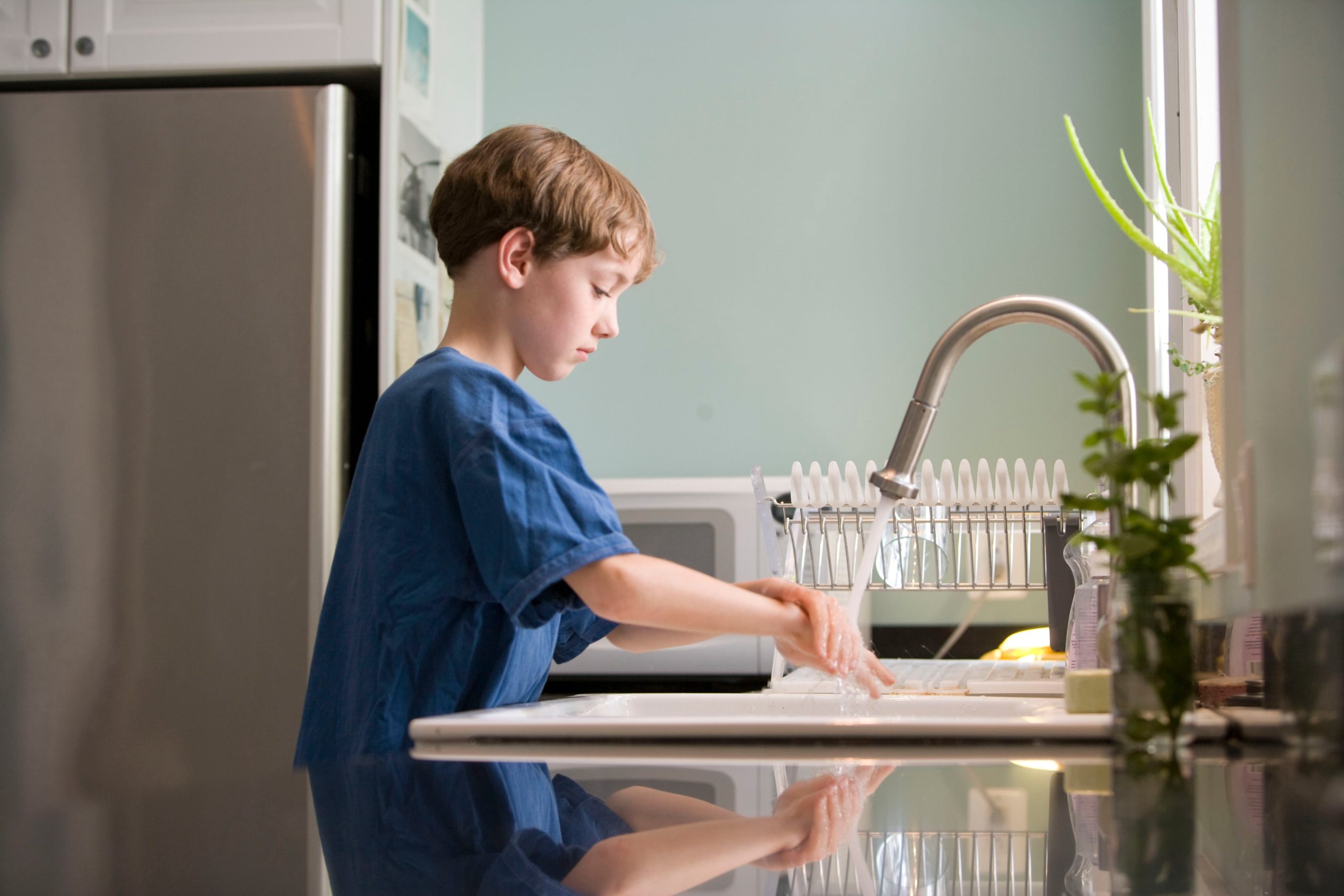 Hard water can wreak havoc on your home’s appliances, your body and wellbeing, and your plumbing. Installing a water softener will help you banish these problems for good. If you have plumbing knowledge and experience, installing your own softener should be a breeze! (If you discover that it’s not, call a professional sooner rather than later!) Keep reading to learn how to prepare for your installation and the basics of setting up your own water softener.
Hard water can wreak havoc on your home’s appliances, your body and wellbeing, and your plumbing. Installing a water softener will help you banish these problems for good. If you have plumbing knowledge and experience, installing your own softener should be a breeze! (If you discover that it’s not, call a professional sooner rather than later!) Keep reading to learn how to prepare for your installation and the basics of setting up your own water softener.
Schedule water softener installation services today.
Preparing For Your Install
There are a few things that you should be aware of and a few steps to take before making a large investment of your time and energy into a water softener installation.
Get a Water Test
First, you should get a water test to identify water quality issues before you take any measures to treat them. A water test will tell you which particles it contains, identify the concentration of these particles, and single out any problem contaminants.
Get a free water test from Blakeslee & Son.
Consider the Costs
Installing your own water softener can help you reduce your costs—only if you have the plumbing knowledge and skill for it, however. The degree of difficulty will also depend on whether you’re replacing an existing water softener or installing one into a space for the first time.
If you are not confident with your plumbing expertise, please consult a qualified plumber.
Involving a professional from the start will not only save you from redoing the work (and paying for it), but will give you confidence that your job was done right and won’t lead to extensive water damage, plumbing problems, or surprises down the road. A professional plumber will also be able to advise you on and perform any plumbing changes that may need to occur prior to water softener installation.
Know How They Work
Exploring your water treatment options requires that you know about the type of system you’re going to install. A water softener is a treatment system that removes hardness particles of calcium and magnesium from your water. If a water test has determined that your water is hard (over three grains per gallon of hardness particles), then a water softener is needed. There are also many other forms of water treatment like filtration systems, reverse osmosis systems, and UV filtration. See if a water softener is what you need!
Pick a Location
You should plan where your water softener will be installed before going through with the project. As mentioned before, this will eliminate plumbing adjustments that could arise after the fact. Properly placing your softener will also allow it to be plumbed so that your home water is softened but your exterior hoses and faucets aren’t.
Where should your water softener go? Without plumbing knowledge or experience, this could get a bit tricky. While every installation is unique, you should follow a few general rules for placement. For example, the softener needs access to a 120V outlet and should be placed in a clean and level area.
When choosing your location, keep in mind these requirements outlined by Sterling Water Treatment:
- The system should be installed as close as possible (preferably within 15’) to an adequate floor or laundry drain capable of handling the backwash cycle volume and flow rate (refer to unit specifications on pages 13-14). An air gap should be provided between the drain line and plumbing drain.
- All water conditioning equipment should be installed at least 10’ prior to the water heater. Water temperatures exceeding 100°F can damage the internal components of the control valve and mineral tank. An expansion tank may need to be installed in the line to the water heater in order to allow for thermal expansion and comply with local plumbing codes.
- Appliances requiring extended periods of continuous or high flow water use (i.e. geothermal heat pumps, swimming pools, lawn irrigation, outside hose bibs, etc.) should bypass all water conditioning equipment unless the equipment has been specifically designed for that purpose.
Installing a Water Softener
1. Gather Your Tools
Depending on the type of piping (copper, steel, CPVC, etc.) in your home now, you will need to assemble the proper tools. You will also need to follow the instruction and safety manual that accompanies your water softener. Pay attention to the warning symbols throughout the manual where following the instructions are required to prevent danger to you or another.
To complete your water softener installation, you may need:
-
- Wrench
- Slip Joint Pliers
- Saw
- Screwdriver
- Tape Measure
- Soldering Torch
You will also need the provided parts packages that come with your softener in its box. Remove them from in and around the softener and remove all excess packaging as well. It is wise at this stage to check that all parts that you need for the process are accounted for, before beginning installation.
2. Connect to Water Supply
Install the bypass valve onto the main control valve before doing any plumbing. Next, shut off your water at the main supply. Turn on the nearest faucet to relieve the pressure from the system. At this point, you should turn off the fuel/electrical supply to your water heater as well.
Then begin to plumb the water supply line to the bypass valve inlet, using the appropriate fittings/adaptors for your existing piping and installing them as listed in the instruction manual. You should connect the fitting to the plumbing system first and then attach the nut, split ring, and “O” Ring.
Remember, your water softener will have an inlet and an outlet: make sure that the water enters through the inlet and discharges through the outlet.
3. Install softener drain line
Next, run a rigid pipe drain line (15’ or shorter) from the drain elbow on the control valve to your floor drain. (Avoid overhead drains). It is important at this stage that there be an air gap at the end of the drain line so that the drain doesn’t come into contact with your water supply and to prevent accidental backflow of wastewater. In many cases, it is even illegal to connect the water softener drain to your home drain without one.
4. Connect Brine Tank to Softener
Water softeners come in different shapes and sizes: some have two tanks that stand apart, and others are one-piece units. If your softener has two separate tanks, the mineral tank will need to be connected to the brine tank using the tubing included with your softener. If you’re installing a one-piece unit, a brine line will need to be connected between the softener and the safety brine valve via the small brine refill elbow. Refrain from putting salt in the softener at this point.
At this stage, it is recommended to install a brine overflow drain line if your softener is in a place where water could damage your furnishings or the building structure. While your softener is built in a way that makes accidental overflow unlikely, in the chance that it does occur, an overflow drain line will direct this water down a drain instead of onto the floor.
5. Test and Start System
Turn the water to your home back on by re-opening the main shut-off valve. Regulate the pressure by once again turning on a nearby tap to allow air to escape and allowing the water to fill the pipes slowly. Ensure that the bypass valve is in the “bypass” position.
Follow the instructions to start up your water softener and program it with your local time of day and your water hardness level. Then program the length of your desired regeneration cycle. You should perform a backwash cycle by following the instructions inside your owner’s manual for your specific model, looking out for leaks or problems in operation.
After successful test cycles, fill the brine tank of your water softener with any type of softening salt, as desired. Finally, turn on the fuel/electrical supply to your water heater.




